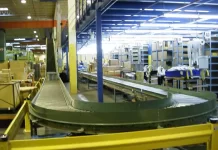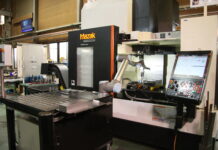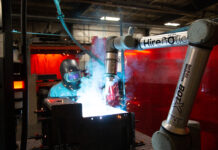Although industrial manufacturing has experienced a dramatic upheaval of technology advancements in the past five years, there are some characteristics that remain unchanged. The shop floor is still the heart and soul of any manufacturing operation – this is where creation happens.
Recent media focus has been on the glamorous topics in manufacturing. The Internet of Things, 3D printing, cloud deployment and Big Data are the high-interest capabilities that have captured the interest, imagination and budget of many manufacturers. It is easy for the basics, i.e. shop floor activities, to fall to the bottom of the list of IT priorities. Asymptomatic issues like inventory inaccuracies or idle equipment can go undetected until a major customer-affecting incident brings them to the forefront.
Ignoring shop floor processes is a serious oversight. Issues that may seem minor, like unexplained fluctuations in labor costs, can suddenly escalate and become major set-backs, affecting growth, profits and production cycles across many departments.
A regular wellness screening can help you take a closer look at the internal workings of scheduling, planning, material handling, inventory, logistics, and time and labor tracking—the areas where most shop floor pains originate.
Limited Visibility
Manufacturers have many options for managing the factory floor, from tools within their ERP system to add-on MES systems and point solutions for inventory or shipping –areas with specialized needs. Because there may be siloes of data from non-integrated systems, visibility into the full operation may be limited and difficult to piece together from fragmented reports. Without integration and real-time visibility to one version of production status, pinpointing errors or inefficiency may be impossible.
Managers may simply have a vague feeling that productivity isn’t “where it could be” and delays “are getting out of hand” and “something” needs to be done. But what? Perhaps occasional gaps in communication are delaying orders? Perhaps machines are sitting idle while shipments of raw goods are waiting to be moved from the warehouse to the floor. Perhaps the necessary components aren’t even in stock, not received from the supplier—or even worse—not ordered yet. These types of “glitches” in production may seem like normal, necessary aspects of complex manufacturing.
High performing manufacturers typically have eliminated those types of nuisance errors. They know that even the small hiccups in production cycles add up to significant impact on the bottom line. Every delay means waste of resources and risks of delivering orders in full and on-time to customers. This is the slippery slope that puts the manufacturer on the downward-slide and that may be difficult to stop and turn around.
 Automation
Automation
Every manufacturer knows that recruiting and retaining right-skilled workers is a top concern. Retiring Baby boomers have left skill gaps that manufacturers struggle to fill. Yet in many facilities, idle personnel can be found on the shop floor. Production crews may be on hold while they wait for the configured product specifications or confirmation from the customer on a design change. Engineers may be tasked with simple data entry and product configuration roles, while important design innovations have to wait for spare time.
Understanding labor costs and inefficiencies is a complex challenge for some manufacturers. Automation improves many of the problems. The question, though, is often which tasks to automate and which to try to fill with workers—with the right skillset. The process of improving use of labor starts with understanding the current circumstances. Many manufacturers simply lack the insight on shop floor labor and how time invested relates to particular orders. Without the ability to track labor—from shop floor, to the warehouse, to shipping—the manager is guessing at the cost of running particular machines or functions. This means billing and quotes to customers may be too low—or too high.
This is a complication that is relatively easy to fix since, labor tracking software is available and can be used to improve monitoring of teams and individuals, tracking specific activities
Material Costs
Tracking material costs is another “basic” shop floor function that is often overlooked. Design engineers may specify materials and components and then project costs in the early stages of product planning and pricing exercises. But the unseen materials costs may be forgotten and or may not be updated as processes evolve. Running production equipment incurs costs, including preventive maintenance. Make-ready and rework uses materials. Rejected units that didn’t pass quality control also have a price attached. These costs can be difficult for the manufacturer to track—unless the right shop floor tools are in place.
With material tracking capabilities the manufacturers will not only be able to monitor the volume of goods used in production, but will be able to dive into anomalies. Why is one shift using twice as much adhesive on packaging than the shift before? Why is Machine B scrapping more electronic components? Why did three shifts on May have a 10% increase in make-ready materials that had to be recycled? These are the types of questions that can asked and answered with continuous monitoring tools. Without the right software, a manager may simply have to observe, ask questions—or speculate. None of those options are the reliable system a manger needs in order to justify difficult decisions, such as replacing personnel or shutting down one production line for maintenance.
Streamlining Work Flows
At the very least the automation solution should provide plant operators the right information at the right time to increase productivity. If the plant floor operators are constantly looking for updated job packets, or if supervisors lack clear visibility to team activities, productivity is seriously being impacted—and escaping detection. Turning the shop floor into a digital hub helps managers control workflows and streamlines processes. When workflows are tracked and monitored through integrated IT solution, managers often see improvements in speed and productivity. Time isn’t wasted searching for clipboards, schematics, spreadsheets or job packets. Tying the shop floor to the digital nerve center—the ERP—lets managers see the relationship, context and influence of multiples systems on two important goals: greater profits and greater customer satisfaction.
Event Triggers
Advanced shop floor solutions allow manufacturers to automate and streamline a wide variety of manufacturing processes, connecting machines and initiating processes. Event triggers and workflows can be created so that next steps in the production cycle are assigned automatically, eliminating the need for person to make a decision and take action. For examples, the company can track quality metrics throughout the production process (from incoming raw materials, work in progress (WIP), all the way to job receipts) with non-compliance components immediately being removed for the batch—rather than waiting until the final inspection. Excessive quality failures can trigger a full quality audit.
Tracking abilities can also handle multi-level serial number hierarchies (end item, sub-assemblies, parts etc.), tracking material consumption, scrap rates and machine run rates. Any anomalies can trigger further reporting and inspection. Such detailed tracking of serial numbers and sub-assemblies helps automate recalls and improves adherence to regulatory mandates.
Quality on the Shop Floor
Automating key activities help ensure compliance with corporate mandates and quality expectations. For example, product inspections can be automated and controlled by sensors which are often far more accurate and reliable than human inspectors. Sensors can detect microscopic imperfections and check for weight, volume, size and density in fractions of seconds. By automating the check points, compliance with specifications and tracking reasons behind any quality infractions, manufacturers can increase operational efficiency as well as influence financial levers and improve timely execution of the production plans. This ultimately improves customer satisfaction—the end goal of most manufacturers.
Protecting quality and on-time delivery of goods helps ensure the manufacturer’s brand is protected. Even the manufacturer with multiple locations, sub-contractors and off shore suppliers, can rely on consistent product specification and performance.
In order to remain competitive in today’s highly global economy, it is important for organizations to continually evaluate their current shop floor processes and look for opportunities for improvement. Modern software solutions improve the capability plus give manufacturers new insights to generating greater profits and increasing customer satisfaction.













